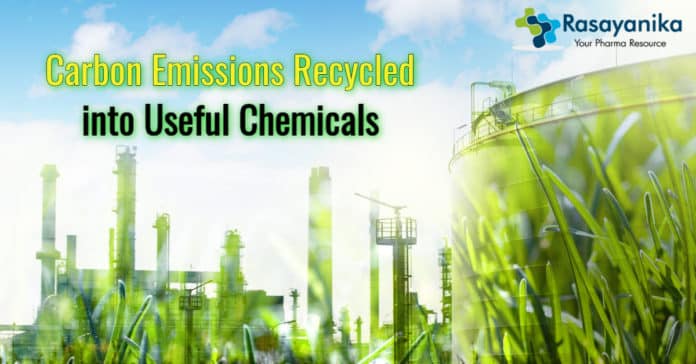Carbon Emission Recycling Into Useful Products To Reduce Global Warming
Swift worldwide urbanization has substantially altered the earth’s atmosphere through global warming and greenhouse gas emissions caused by environmental pollution. It is currently of dire importance to regulate our activities and discover more sustainable choices to maintain what’s left of our planet for future generations.
CO (carbon monoxide) and CO2 (carbon dioxide) comprise a huge percentage of the commercial fuel gases. Research has revealed that specific microbes have the potential to metabolize these industrial gas emissions into beneficial by-products. Hence, scientists are currently routing efforts to use microorganisms to recycle the gases and transform them into valuable chemicals in a procedure called CCU (Carbon Capture and Utilization). This is one step past the prevalent technique of CCS (Carbon Capture and Storage). However, it is challenging to optimize the scaling up of a technique as expensive and as high energy-demanding as CCU for maximized output.
This was solved by a team of Korean researchers who developed the BES (Bioelectrochemical System), a newer form of carbon emission recycling system. Pusan National University’s Prof. Jung Rae Kim, who led the team, explained the system’s mechanism. The BES comprises electroactive bacteria that transform CO
or CO2 into beneficial metabolites like volatile fatty acids and acetates using a reducing power like electricity. The BESs were optimized to be 2-6 times more efficient than the existing system for carbon monoxide. The journal Bioresource Technology published the scientists’ discovery in January 2021.This optimization was achieved by the two-chamber BES’s unique attributes where the 2 chambers were divided by an IEM (Ion Exchange Membrane). While an electro-active biofilm occupies the cathode while water electrolysis causes hydrogen ion production by the anode. The IEM controls the electron and proton flow between the chambers. The system’s initial pH is controlled by certain mechanisms in one chamber, while the other chamber is filled with microbial culture media. A quinone electron mediator is additionally utilized.
Carbon emission recycling is accomplished using the proper IEM, which permits protons but not oxygen to travel through. The right IEM results in long-chain fatty acids synthesized along with an acetate production boost within the cathode chamber. The mechanism involves generating a higher proton gradient across the IEM caused by an acidic pH in the anode chamber. The quinone-dependent mediators enhance product formation and electron transfer.
Dr. Kim explained how CO had double the coulombic efficiency of CO2 because of the former’s reduced state. Most of the biomass gasification and steel mill processes have off-gas with carbon monoxide as the primary constituent. Several bioprocesses can thus use BES to transform this gas into a valuable feedstock. He revealed that such CO conversion was made economically feasible due to the use of BES. Speaking about the applications of this process, he explained that the feasibility of BES was a result of the self-replicating characteristics of microbes. Dr. Kim predicts that the next 5 years would see this optimal system that the researchers have created combined with its commercial viability and efficiency would make this an object of interest to many industries, eventually becoming a commercial industrial machinery.
Carbon emission recycling















































